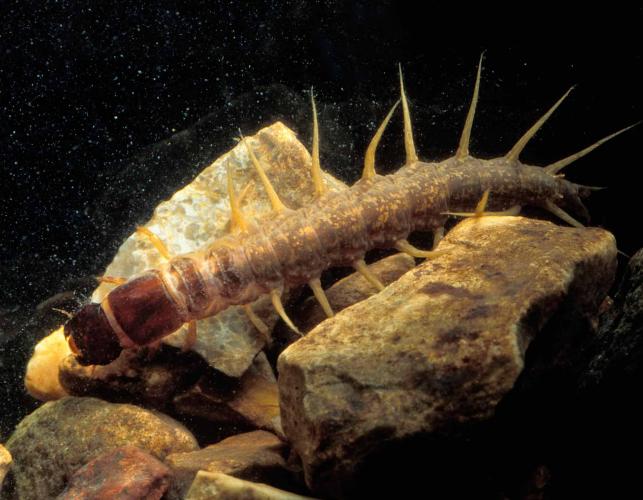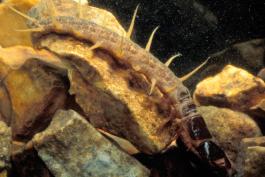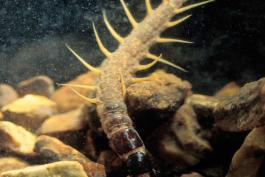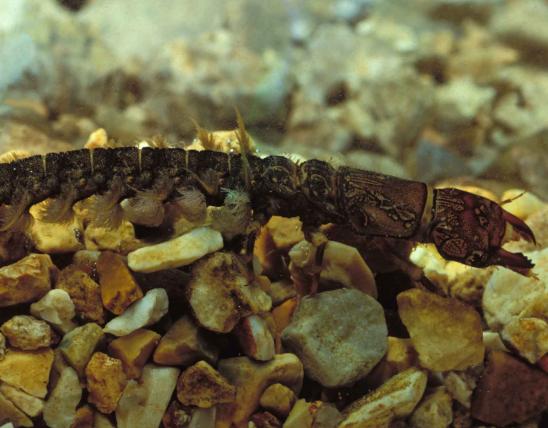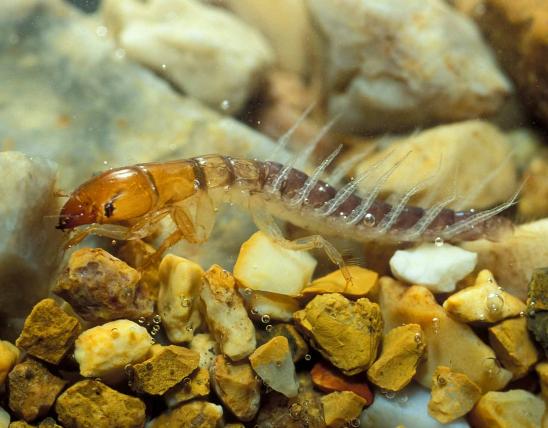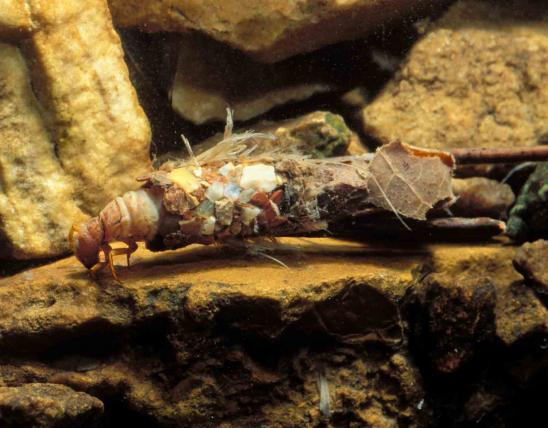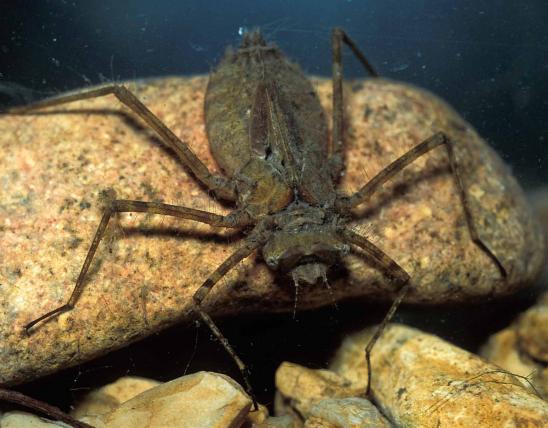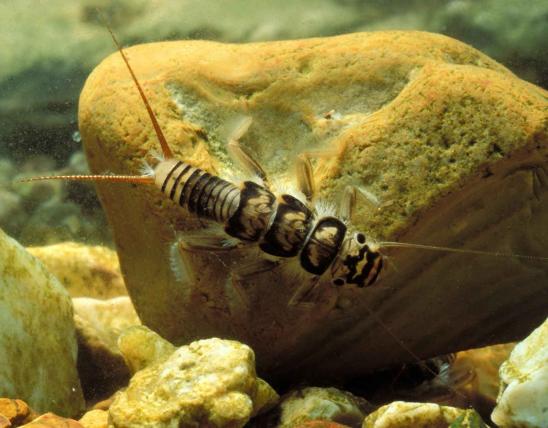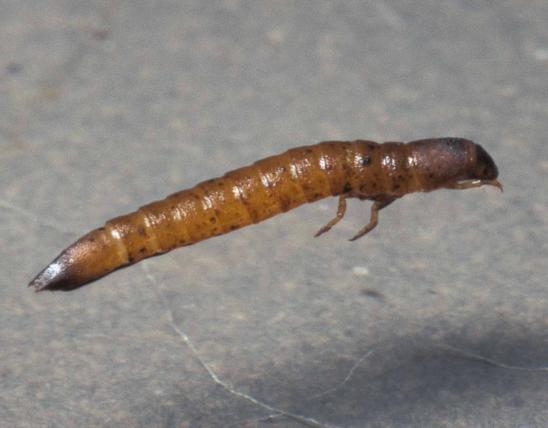
Fishfly larvae look a lot like hellgrammites but usually do not grow quite so large. Unlike hellgrammites, they lack gill tufts below the abdomen, and the abdomen tip is forked, with 2 short, fleshy tails, and each tail has a pair of hooks. They are generally fairly light-colored; often tan with a reddish cast.
Like the larvae of dobsonflies and alderflies, fishflies have 3 pairs of jointed legs in the upper part of the body, with each leg tipped with a tiny, 2-parted pincer; they have several fleshy filaments extending from the sides of the abdomen; and the mouthparts are large pincers.
Take care if handling fishfly larvae; they can pinch you with their stout mouthparts. Either hold them just behind the head, or use forceps to handle them.
Similar species: Hellgrammites (larval dobsonflies) are usually dark brown or black, usually larger, and have 8 pairs of pointed, leglike appendages along the abdomen, each with a cottony or hairy gill tuft as the base. There is a pair of hooked, leglike appendages at the hind tip — not a pair of fleshy tails. Alderfly larvae have 7 pairs of pointed, leglike appendages along the abdomen; although, like fishflies, they lack external abdominal gill tufts, they have only a single tail extension. The larvae of some aquatic beetles also have fleshy filaments along the abdomen and/or 4 hooks at the hind end. However, those that have 4 hooks have all of them arising from the same extension, not 2 hooks each from 2 extensions.
Larval length: usually ¾–1½ inches; varies with species; some to 4 inches long.
Statewide.
Habitat and Conservation
Different species prefer different types of aquatic habitats. The larvae of some fishflies prefer slow-moving, detritus-littered waters, including the edges of streams, while others require clearer, faster-flowing, better-oxygenated streams. They often hide among stones. The short-lived adults are usually found among vegetation along streams.
Food
Fishfly larvae, depending on species, are omnivorous or predatory, using their stout mouth pincers for grasping and chewing. Fishflies generally do not eat during their brief time as flying adults.
Status
Fishflies and dobsonflies are the two subfamiles in the family Corydalidae. In North America, there are about 18 species, in 6 genera, in the fishfly subfamily.
Life Cycle
Like many other insects with aquatic larvae, most of a fishfly’s life is spent in water, growing through immature stages, with only a brief period — sometimes not even a week — experienced as a winged adult. Females lay egg masses on leaves or branches overhanging water, and the young move into the water soon after hatching. They may live for 1–3 years as aquatic larvae as they eat, grow, and molt. They crawl out of water to pupate in a sheltered place; sometimes in the soil, sometimes in rotting wood or behind loose bark.
Human Connections
Fishfly larvae, like hellgrammites, are a good natural bait for anglers.
Ecosystem Connections
Fishfly larvae are one of several groups of aquatic invertebrates whose presence usually means that water quality is good. Stream ecologists consider them an indicator that a stream is healthy.
